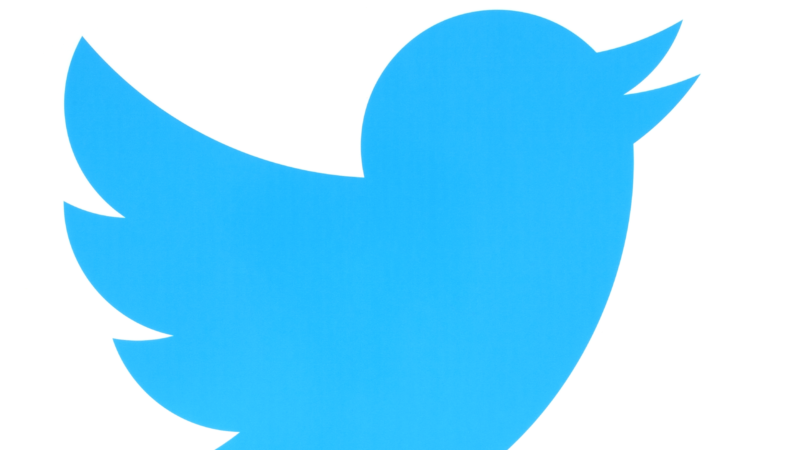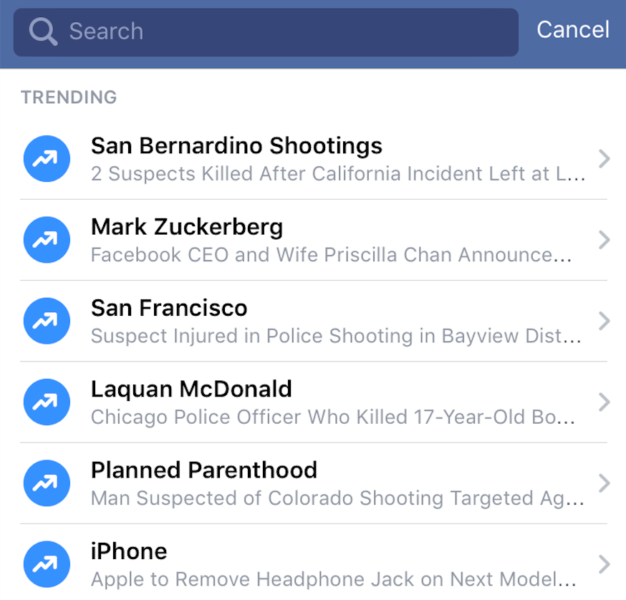Why Twitter Trends Couldn’t Spell San Bernardino Correctly
#SanBernadino was the hashtag that trended on Twitter, even though #SanBernardino was the correct spelling. How this happened & how Twitter Trends might improve.
As could be expected, news of the terrible shootings and deaths in San Bernardino yesterday spread widely on Twitter, to the point it was a top Twitter Trend. But throughout the day, Twitter Trends misspelled the city’s name.
How Twitter Trends Promoted The Misspelling
As many who live in Southern California know, San Bernardino is often pronounced as “San Bernadino” — with the R before the “dino” part being dropped. As a result, it’s understandable why so many who might have tweeted spelled the city’s name wrong, including in the hashtag that trended. That was #SanBernadino, as shown below:
That error was compounded by Twitter itself. It went with the misspelling as the trending term, which caused some people to deliberately use it, assuming that was the best way for their tweets to appear in related searches (which is Twitter’s exact advice, even if not entirely true).
Twitter also suggested the misspelling as an auto-completion when people started typing “#sanber…” within the Twitter app. That caused even more people to use the misspelling. I can tell you first-hand that you had to actively work to prevent Twitter’s auto-completion from turning the correct spelling into the misspelling.
It wasn’t just rank-and-file tweeters using the misspelling. Throughout the day, I noted media outlets, as well as celebrities with large followings, doing the same.
Below are just a few examples of this, ranging from The Guardian, CSPAN, comedian Patton Oswalt, journalist Dan Rather, and even the San Bernardino County Sheriff’s department — which clearly knows how to spell the city (and county) name but which probably had an auto-correction happen (it usually went with the correct spelling):
Update: The Guardian has interviewed a neighbor about the couple who killed 14 people in #SanBernadino https://t.co/qdJQQOJwJI
— Guardian US (@GuardianUS) December 3, 2015
.@SenSanders: "It is very difficult for the American people to keep up with the mass shootings…" #SanBernadino https://t.co/iPH1J5yvOp
— CSPAN (@cspan) December 3, 2015
Oh, so the #Pasadena shooting is unrelated to the #SanBernadino shooting. Phew! Two UNRELATED shootings on the same day! Everything's fine!
— Patton Oswalt (@pattonoswalt) December 2, 2015
It is not enough to say our prayers are w/ the victims. This is a national security issue: https://t.co/u5OMrDBD02 #SanBernadino
— Dan Rather (@DanRather) December 2, 2015
PRESS CONFERENCE will take place Waterman north of Hospitality at 1:45 ref the #ActiveShooter incident #SanBernadino pic.twitter.com/llh9KaSPms
— SB County Sheriff (@sbcountysheriff) December 2, 2015
Let me stress that I’m not criticizing any of the outlets or people above. These are just some examples of how the misspelling was widely used.
Also, throughout the day, I could see several familiar with the city point out that the spelling was wrong, including the Los Angeles Times and noted LA Times columnist Patt Morrison:
The trending tag, btw, is #SanBernadino, but I can't do that to #SanBernardino.
— LA Times City Beat (@LATimescitybeat) December 2, 2015
Pls, someone, fix this hashtag. There is no such place as San #bernadino. Your GPS/app won't work if you spell it so. It's San BernaRdino.
— patt morrison (@pattmlatimes) December 2, 2015
I mentioned this, as well, growing increasingly frustrated that Twitter itself didn’t fix the situation. Yes, in light of the deaths that happened, getting the spelling wrong is a minor issue. But then again, given the horror visited upon San Bernardino, getting the city’s name wrong didn’t help. It would be as if after the Paris attacks, people were tweeting #pairis.
How A Trending Term Gets Picked
Several responded to me on Twitter, as I voiced these concerns, that Twitter simply goes with the most popular hashtag. As it turns out, that is indeed the case. However, it didn’t seem so when I was looking at this initially.
Consider that on the same day, another trending topic, as illustrated above, was “Hilary Benn,” who spoke forcefully in the UK’s House of Commons in that country’s debate over bombing ISIS in Syria. The topic was his full name, even though people tweeting about his speech might have used only his surname, his Twitter account or a hashtag with his name.
Consider also today how “The Wiz” is trending, even though some of the tweets coming up when clicking on that trending topic link include posts that simply say “#thewiz” as a one-word hashtag.
Twitter Trends, as I understand from my past discussions with Twitter, tries to surface popular, trending topics and bring back results about those topics regardless of exact spellings or hashtags. For the topic of “San Bernardino,” this means Twitter Trends might find tweets that use one or all of these things:
- San Bernardino
- San Bernadino
- #sanbernardino
- #sanbernadino
The Algorithm Picks The Trend Name
Twitter did reconfirm for me that it is indeed all down to an algorithm that picks which hashtag, word or phrase will be used to represent the overall topic, largely on popular usage. Twitter wouldn’t discuss the San Bernardino situation specifically, but you can understand how it played out. The hashtag with the incorrect spelling became popular, causing it to become the name of the topic overall. Once selected, it became a self-fulfilling prophecy as more people used it.
There are reasons why Twitter might want to consider changing this and allow some editorial oversight, with the San Bernardino situation being only the freshest example. There are also reasons why Twitter, if it does decide to exercise editorial control, would need to be careful. Changing something like #BlackLivesMatter to “Black Lives Matter” could be viewed as fundamentally disconnecting the movement from the hashtag that started it.
Facebook Got It Right
Another solution would be for Twitter to improve its algorithm. Facebook is an example here. Like Twitter, Facebook has trending topics. The exact topics that appear are all selected by an algorithm, Facebook tells me. And Facebook got San Bernardino’s name spelled correctly:
Facebook’s algorithm probably has an advantage in that people seem to use hashtags much less often on the service, which may motivate them to share information about a topic in a variety of ways. In addition, it may be that people are sharing more news stories on Facebook about an event rather than comments, helping Facebook to rely on how the media describes an event.
As I said, the misspelling of San Bernardino in the wake of the tragedy the city suffered is a minor thing. But I think it also does matter, especially if it’s causing people and especially news outlets to deliberately misspell things in order to avoid having important comments or content lost.
Twitter Trends should be smarter than that. On the back end, it already knows how to consolidate content around a topic, even if different words about the topic are used. That could be improved, as could the way a topic is described in trends.
Finally, a last note. People often talk about terms trending on Twitter, forgetting that not everyone sees the same trends. Most people likely see trends that are tailored to them, based on their location and who they follow. Some may choose to select custom trends for particular cities. But when someone says something “trended on Twitter,” it might not actually have trended as far and wide as they think.
That’s probably not the case with San Bernardino. Many people clearly saw that trending, regardless of whether they were using tailored trends or trends for particular cities. But it might be the case with other trends — and it’s one reason I wish Twitter made it easy to see an overall list of trending terms worldwide, by country or city, without having to actually change your personal settings.
Opinions expressed in this article are those of the guest author and not necessarily MarTech. Staff authors are listed here.
Related stories


